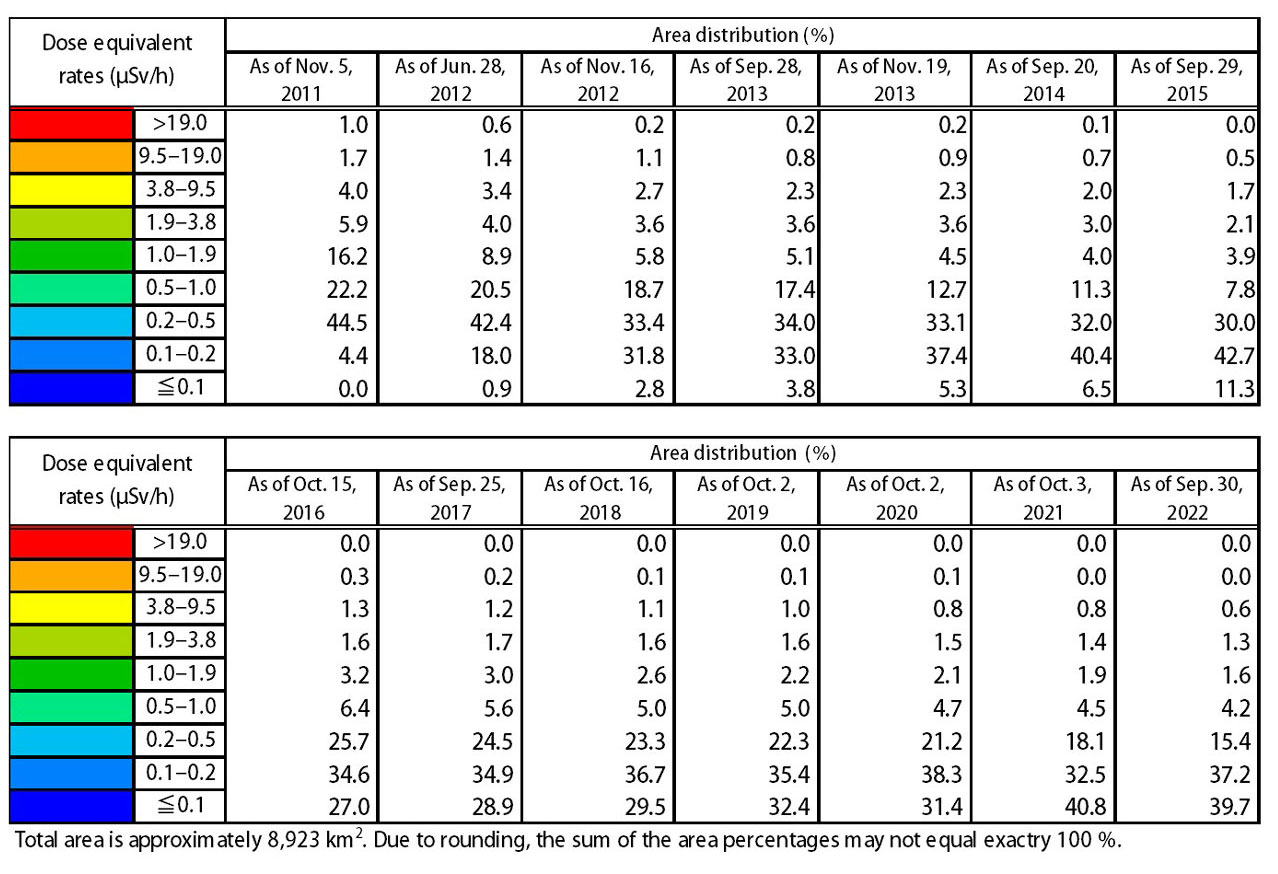Publication Date: March 31, 2025
Access counts:0
Measuring Radiation from the Sky
-A Decade of Ambient Dose Equivalent Rates Observations Around TEPCO’s Fukushima Daiichi Nuclear Power Station-

Fig. 1 Temporal changes in ambient dose equivalent rates around the FDNPS (2011–2022)
Table 1 Temporal changes in area distribution based on radiation levels (2011–2022)
This table presents the distribution of land area based on radiation levels over time. In 2011, approximately 95 % of the monitored area exhibited radiation levels exceeding 0.2 µSv/h; however, by 2022, this proportion had decreased to about 23 %, with most of the area recording radiation levels below this threshold.

Since the accident at TEPCO’s Fukushima Daiichi Nuclear Power Station (FDNPS) on March 11, 2011, We have continuously evaluated ambient dose equivalent rates around the FDNPS via aerial radiation monitoring (ARM). ARM enables the rapid and wide-area assessment of radiation distribution, even in difficult-to-access areas such as forests and mountains, where ground-based monitoring is not feasible. Furthermore, ARM played a crucial role in establishing evacuation zones immediately after the accident at the FDNPS and has also been utilized to review and lift these zones, considering decontamination efforts and natural radioactive decay so far. ARM has also informed decisions on review and lifting of evacuation zones, contributing to ensuring the safety of residents.
As illustrated in Fig. 1 and Table 1, immediately after the accident, approximately 95 % of the area within an 80 km radius of the FDNPS exhibited ambient dose equivalent rates exceeding 0.2 µSv/h (approximately equivalent to the annual exposure dose limit of 1.0 mSv for the public). However, radiation levels have decreased over time, and by 2022, this proportion had dropped to about 23 %. Aerial monitoring has enabled quantitative assessment of these changes, providing clear evidence of radiation level trends and offering scientific data to support the recovery of affected regions and public safety. These monitoring results are publicly available through the website of the Nuclear Regulation Authority*.
ARM is expected to serve as a valuable emergency response tool during accidents at other nuclear facilities. With its capability to conduct rapid and wide-area assessments independent of ground infrastructure conditions, the data collected via ARM will continue to play a vital role in identifying affected areas and supporting effective measures to enhance public safety.
If you have any comments or feedback about this page, please click the button to share your thoughts with us.
